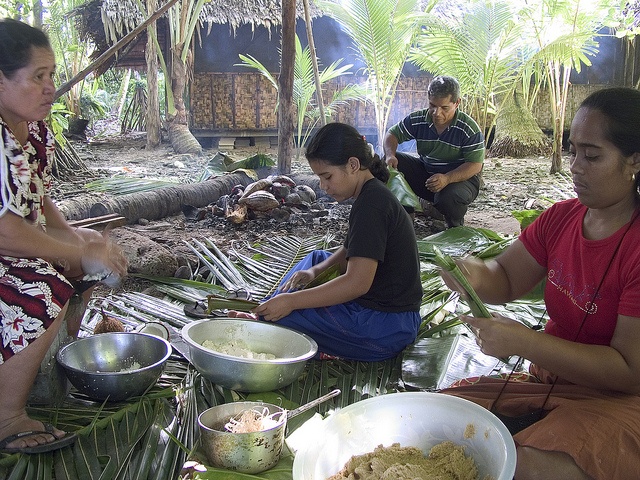Introduction to Micronesian cuisine
Micronesia is a region of islands located in the western Pacific Ocean, consisting of four main island groups: the Caroline Islands, the Gilbert Islands, the Marshall Islands, and the Mariana Islands. The cuisine of Micronesia is as diverse as its people and culture, with each island group having its own unique culinary traditions and flavors.
Micronesian cuisine is characterized by its reliance on fresh seafood, coconut, taro, and yam as staple ingredients. The cuisine is also influenced by its Asian and Polynesian neighbors, as well as the colonial powers that have occupied the islands over the centuries.
Traditional Micronesian cooking methods
Traditional Micronesian cooking methods involve the use of open fires, pits, and earth ovens. The most common method is the earth oven, also known as a “umu” or “hangi”. This involves digging a pit, lining it with rocks, heating the rocks with a fire, and then placing the food on top of the rocks to cook.
The traditional cooking methods are still used today, especially for special occasions and celebrations. They are not only a means of cooking food but also a way of preserving Micronesian cultural heritage and passing down traditional knowledge from generation to generation.
Unique ingredients in Micronesian cuisine
One of the most unique ingredients in Micronesian cuisine is “sakau”, also known as kava. It is a root that is pounded and mixed with water to make a traditional ceremonial drink. Another unique ingredient is “nangka”, or jackfruit, which is used in both sweet and savory dishes.
Coconut is another staple ingredient in Micronesian cuisine, and it is used in a variety of ways, including as a milk, oil, and a flavoring agent. Other unique ingredients include breadfruit, pandanus, and taro.
Cultural influences on Micronesian cuisine
Micronesian cuisine has been influenced by a variety of cultures, including Chinese, Japanese, Filipino, and American. The Chinese brought soy sauce and noodles, while the Japanese introduced sushi and sashimi. The American influence is seen in the widespread availability of processed foods and fast food chains.
The cultural influences on Micronesian cuisine have resulted in a fusion of flavors and cooking techniques. However, traditional Micronesian dishes and ingredients remain at the heart of the cuisine.
Uncommon cooking techniques in Micronesian cuisine
In addition to traditional cooking methods, Micronesian cuisine also uses some uncommon cooking techniques. One such technique is “inadobo”, which involves marinating meat or seafood in a mixture of vinegar, soy sauce, garlic, and spices before cooking.
Another unique cooking technique is the use of “poko”, or banana leaves, to wrap food before cooking. The leaves impart a subtle flavor to the food and also help to keep it moist during cooking.
Conclusion: The rich culinary heritage of Micronesia
Micronesian cuisine is a reflection of the region’s diverse cultural heritage and natural resources. Traditional cooking methods and unique ingredients play a significant role in the cuisine, and cultural influences have resulted in a fusion of flavors and techniques.
Despite the influences of modernization and globalization, Micronesian cuisine remains an important part of the region’s cultural heritage, and efforts are being made to preserve and promote it.

